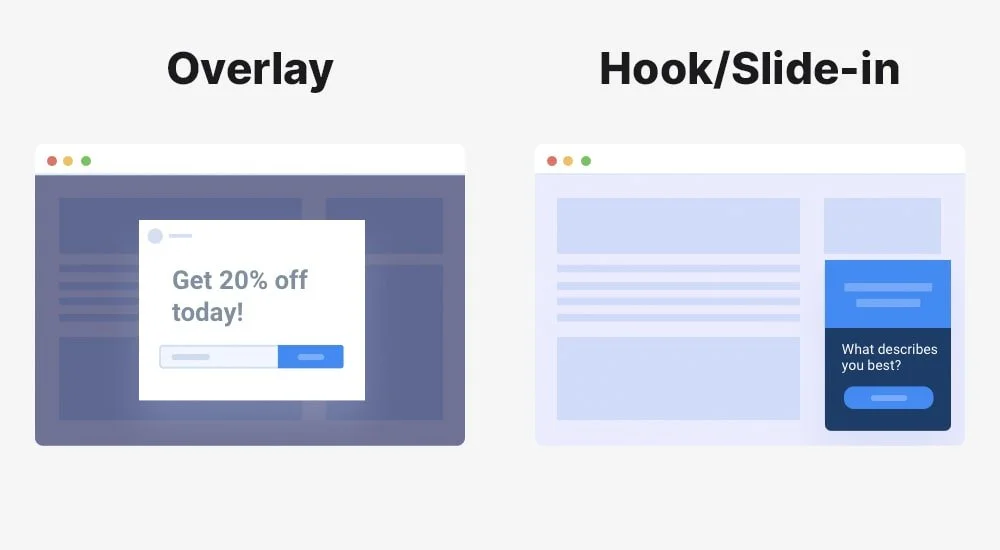Are Pop-Up Ads Right for Your Business?
Are Pop-Up Ads Right for Your Business?
Pop-up ads: love them or hate them, they’re back. These ads used to be very annoying when they first appeared on websites. They would pop up suddenly and interrupt your experience, which is why many internet browsers added tools to block them. But lately, pop-up ads are making a comeback. Why? Well, some businesses say they help bring in more customers. But are they right for your business? Let’s take a closer look.
What Are Pop-Up Ads?
A pop-up ad is a small window that appears over the content you’re viewing on a website. These ads try to grab your attention by offering something, like a discount, asking you to sign up for emails, or encouraging you to take an action right away. Sometimes they appear when you first visit a website, but they can also show up after a few seconds or when you're about to leave the site.
Here’s an example of a pop-up ad:
Pop-ups can appear in different ways:
Classic pop-ups: These open as a separate window on top of your current page.
Overlay pop-ups: These are windows that cover part of the webpage but don’t open a new window.
Slide-ins: These pop up from the side of the screen.
Are Pop-Up Ads Effective?
Yes, pop-up ads can be effective for certain businesses. They can get more people to take action, like signing up for a newsletter, downloading a free guide, or making a purchase.
Neil Patel (a well-known online marketing expert) found that pop-up ads helped increase sign-ups by more than 100% on his website. That means he got twice as many people to join his email list after adding pop-ups!
Matthew Woodward, another marketer, saw a 44% increase in sign-ups when he used a pop-up ad. He gained about 52 new subscribers every month.
These numbers show that pop-ups can help get people to do something on your website, like subscribe or make a purchase.
But, here's something to remember: Pop-ups work best when they offer something valuable, like a big discount or helpful information. If you just ask people to join your email list with no special offer, they might ignore the pop-up or get annoyed.
Are Pop-Up Ads Legal?
Yes, pop-up ads are legal, but there are some rules you need to follow to make sure you’re not breaking any laws. You need to be transparent about what you’re offering and make sure the pop-up isn’t too intrusive. For example, it’s important to include a clear way for visitors to close the pop-up if they don’t want to interact with it.
Pop-ups are also regulated in some countries. In the European Union, websites must get permission from users before sending cookies or using personal data for advertising purposes. In Australia, make sure your pop-up complies with the Australian Consumer Law, which requires that ads be truthful and not misleading.
What Are the Disadvantages of Pop-Up Ads?
While pop-ups might help increase sales or sign-ups, there are also some disadvantages to using them on your website.
They Can Annoy Visitors
Pop-ups interrupt people’s experience on your website, and some visitors find them very annoying. Many people avoid websites with pop-ups altogether because they don’t want to deal with them.
They Can Decrease Engagement
Even though pop-ups might get people to sign up for something, they don’t always lead to long-lasting relationships. For example, visitors who sign up for your newsletter through a pop-up might never open or read your emails. So, while the pop-up brought them in, it might not create real, long-term engagement.
They Can Make Your Website Slow
Pop-ups can slow down your website, especially if there are too many of them. Visitors may get frustrated if the page takes too long to load, and they might leave your website before it even finishes loading.
They Might Drive Visitors Away
Pop-ups can make visitors feel like they’re being forced to do something, like signing up for emails or making a purchase. If the pop-up is too intrusive or doesn’t offer something valuable, people might leave your website and never return.
How to Make Pop-Ups Work for You
If you decide to use pop-up ads on your website, there are a few things you can do to make sure they work well without annoying your visitors:
Timing Is Important
Don’t show pop-ups right away when someone visits your website. Give them time to explore and get comfortable with your site. A good time to show a pop-up is when a visitor is about to leave your site, or after they’ve spent a certain amount of time on your page. This is when they are more likely to be interested in your offer.
Make Them Easy to Close
Pop-ups should be easy to close if someone isn’t interested. Always include a visible close button that lets visitors remove the pop-up quickly. If the pop-up is hard to close, it can frustrate people, and they might leave your site.
Offer Something Valuable
The pop-up ad should offer something useful or exciting, like a discount, free e-book, or a special deal. A good example is offering a coupon for first-time customers or a free guide that will help your visitors. If your pop-up offers value, people are more likely to pay attention to it.
Use Non-Intrusive Pop-Ups
Instead of using big, annoying pop-ups that cover the entire screen, try using small banners or slide-ins that appear at the corner of the page. These are less intrusive and are still a good way to get attention.
Test and Adjust
Not every pop-up will work the same for all websites. Test different types of pop-ups and timing to see what works best for your audience. For example, try pop-ups with different offers, or change when they appear. Check how many visitors click on them, and adjust accordingly.
When Should You Use Pop-Ups?
Pop-ups can work well for certain events or promotions, like:
Limited-time offers: If you’re offering a big discount for just one day, a pop-up can help get people to act quickly.
Special events: Hosting a giveaway or contest? Pop-ups are a great way to tell visitors about it.
Important announcements: If you’re launching a new product or service, a pop-up can grab attention.
For everyday use, pop-ups might not be the best choice. Instead, consider using banners or calls to action that are easier on the eyes and don’t interrupt the visitor’s experience.
Pop-up ads can be a great way to increase conversions and get more sign-ups or sales, but they aren’t without their downsides. If you choose to use them, make sure they’re well-timed, easy to close, and offer something valuable to your visitors. And remember, sometimes smaller, non-intrusive ads can be just as effective.
Use pop-ups carefully. If you do, they can help your business grow by getting more people to take action. But always keep in mind that too many pop-ups can drive people away. Try them out, measure the results, and decide what works best for your website and your visitors.
Disclaimer: The advice in this article is for informational purposes only. Make sure to consult a professional before implementing any marketing strategies or advertising methods on your website. Always ensure that your pop-up ads comply with all relevant laws and regulations in your area.
If you're unsure where to start, OME – Online Market Experts is here to help! Our team specializes in creating smart, effective marketing strategies tailored to your business. From designing attention-grabbing pop-ups to optimizing your website for conversions, we can ensure your pop-ups drive results without frustrating your visitors.
Let us help you make the most of your marketing tools! Contact OME – Online Market Experts today to learn how we can support your business growth.



